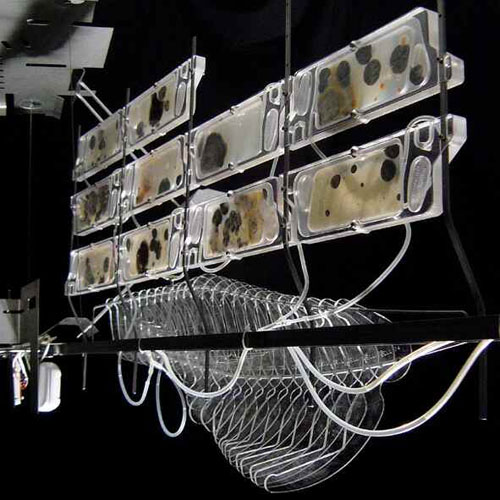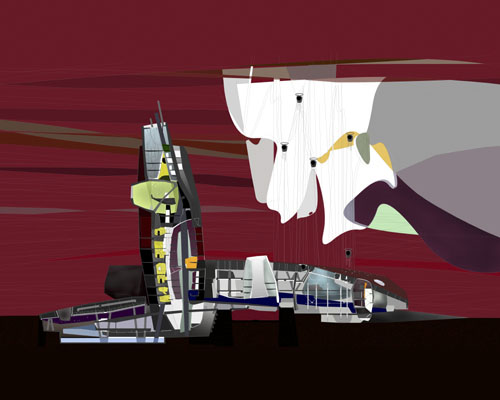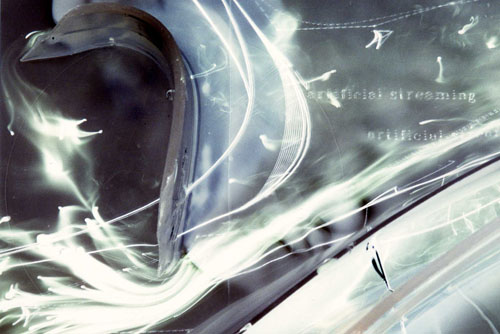|
|
|||
|
|
|
|
|
 |
|||
Steve Pike |
|||
| CONTAMINANT. Architectural Sculpture – 3m x 0.9m x 0.6m - steel, glass, acrylic and microfungi. The environment that surrounds us is teeming with an incredible variety of microorganisms. As our ability to view and investigate this minuscule world develops, we are becoming increasingly aware of the importance of these organisms and the contribution they make to the circumstances in which we exist. Their domain presents us with notions of form, organisation, material and composition bearing considerable relevance to the environment we inhabit. The manner in which these microorganisms colonise their environment, how they communicate, organise and negotiate their territory, along with the mechanisms and purpose they employ, provide metaphorical parallels to human colonisation. Valuable lessons regarding symbiotic relations and sustainable systems can be drawn, whilst touching morally sensitive issues of growth manipulation and behaviour control. The subterranean vascular network of The London Underground provides airborne highways for particulate matter across the city. London's inhabitants act as unwitting hosts to microbial populations, introducing catalytic material describing individual daily activity. A series of monitor vessels and occupational clusters colonise the redundant portion of Holborn Station, capturing and propagating the ambient particles. An architecture of contamination results, the fabric and spatial possibilities of the station reconfigured with every microbial progression. |
|||
|
|
 |
|
|
|
|
Keith Watson |
||
| European Network of Motel and Service Stations for Hydrogen Powered Vehicles The design proposes a chain of 60 service stations throughout Europe, focusing on three locations in particular. In the modern era one can travel from country to country but remain fixed in the homogeneous space created by a global consumerism. These service stations while embodying the very nature of corporate identity, also aim toy with the personal cultural identities of the nomadic users who occupy it. Where service stations are typically the very essence of 'non-place', the design of these iconic black boxes seeks to create a dynamic landmark where users can recontextualise themselves in their temporal, local and global, surroundings. In this process the service station seeks to create a dialogue between the user and their immediate context, before they enter the controlled and altogether more global, and slightly sinister, mystery of the black box motel. The physical location is an existing service station on the A13 Hague- Rotterdam motorway, just outside the southern fringe of Delft. Strict planning bands serve to separate the sight from the residential core of the town. Thus the existing station fails as inevitably most service stations do, to offer any relationship between the traveller and the town for which it hosts. In this case the station is not just a by-way for travel between two large cities, but is an interchange between motorway and local travel. Over the lifespan of the building the demand for fuel may decrease. But by attempting to conversewith the local population beyond the wall of light industry and university buildings, the service station can in the long-term become an alternative town centre. In this respect, the measurement of the success for any service station, would be one which manages to attract local use, say for a night out. The way the building seeks to achieve that is by extending its presence in the landscape using scale. As one of the primary functions, the service station uses water and wind power from the site for the self-sufficient production of hydrogen for power cell vehicles. It stores the hydrogen in balloons which formally respond to the site topography, articulating it into the sky through its reflective shell. In this case the elevated landscape seems particularly appropriate for the flat artificial Dutch landscape. |
|||
 |
|||
Jens Ritter |
|||
| Lamina Flows Lungenklinik, Sportzentrum und Forschungsinstitut, Helsinki, 2001 Die Idee einer Lungenklinik im Meereswasser gründet sich auf dem Phänomen des "Air Sea Exchange", dem Austausch zwischen Luft und Salzwasser. Durch diesen Austausch besteht im bereich von ca. 50 cm oberhalb der Wasserfläche eine sehr hohe Dichte von Salz- und Mineralteilchen. Diese sind gesundheitsfördernd für die menschlichen Atemwege und kann die Lungenkapazität erhöhen. Das Ziel ist es, diese Ebene für Patienten oder auch Menschen, die von den Vorteilen Gebrauch machen möchten, zugänglich zu machen. Der Komplex, ca. acht Kilometer vor Helsinkis Küste gelegen, besteht aus drei Teilen, eine Lungenklinik, ein Wind und Wasser Sportzentrum und ein medizinisch wissenschaftliches Institut. Der Komplex "liegt" auf Luftkissen, die am Meeresgrund durch Seile gesichert sind und kann so auf die Bewegungen des Wassers reagieren. Die Untersuchungen an Lamina Flows, turbulenten Strömungsphänomenen in nahen Küstengebieten wurde mit der Unterstützung von Dr. RR Simons am Institut für Strömungsverhalten, University College London (Fluid Mechanics Engeneering Department, UCL) unternommen. |
|||